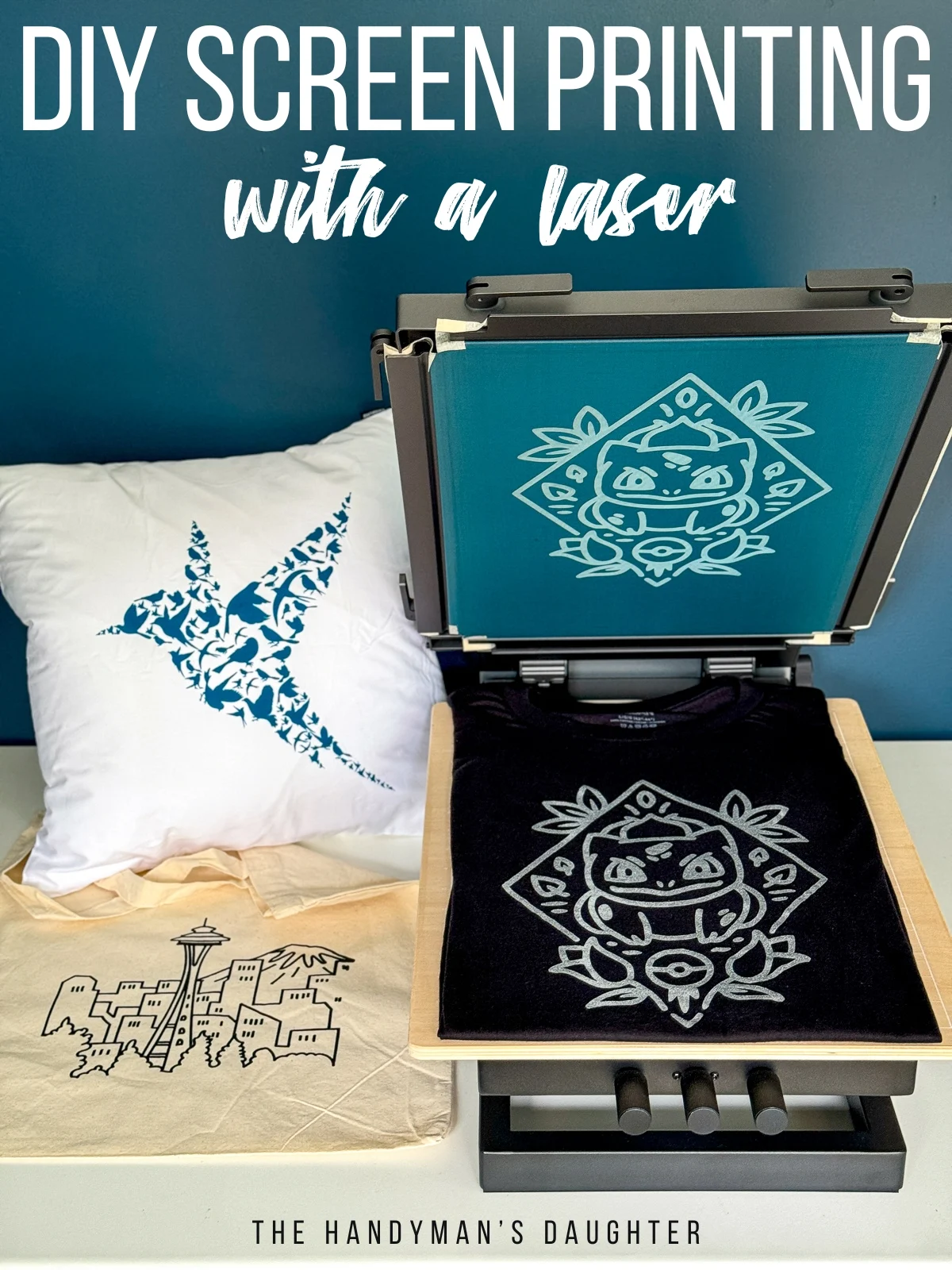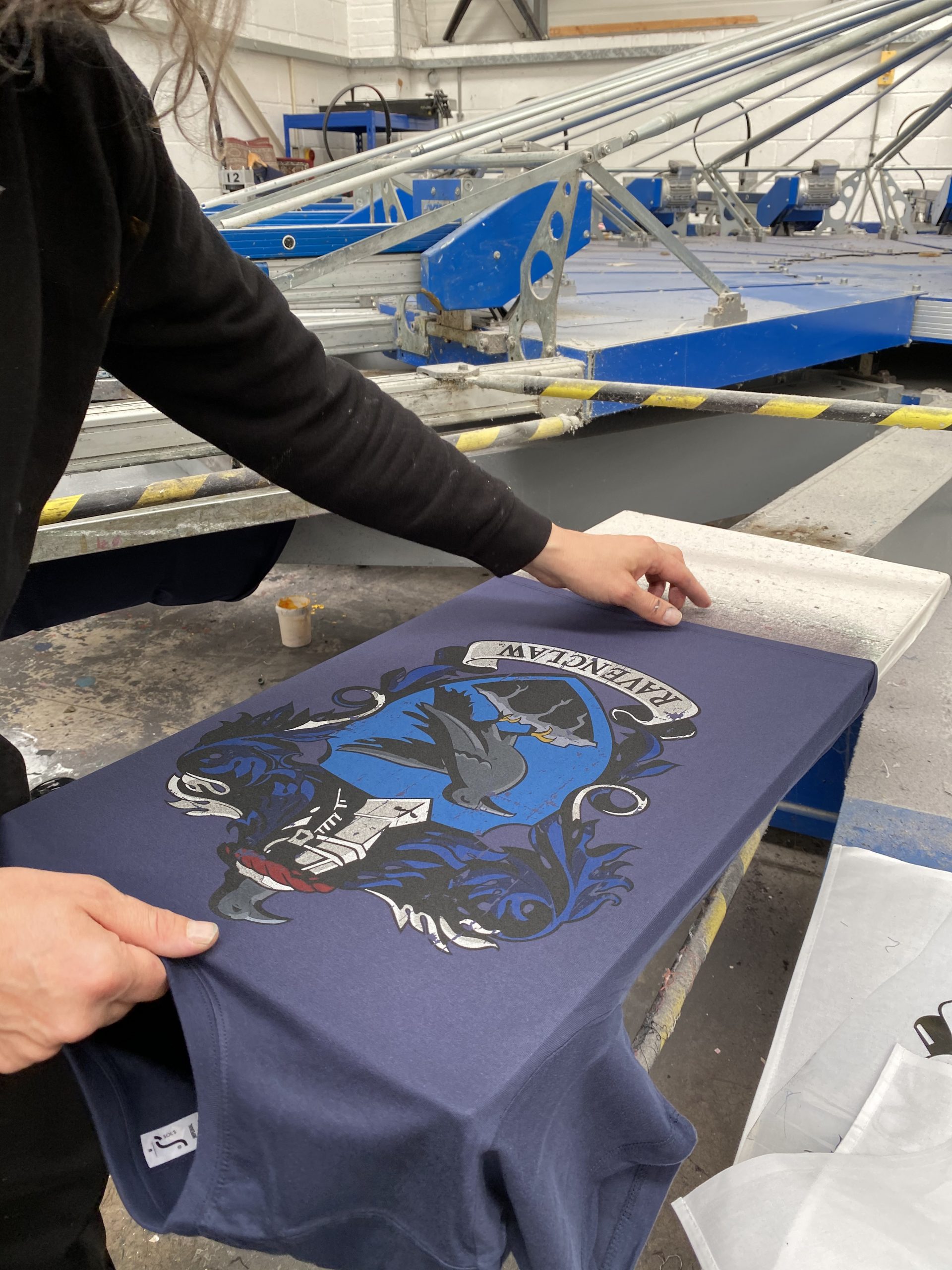Screen Printing curing and finishing techniques to guarantee long-lasting quality
From Layout to Shipment: Mastering the Art of T-Shirt Screen Printing
The trip from design to shipment in t-shirt screen printing includes a collection of critical points that require interest to information and strategic planning. It begins with comprehending the nuances of your target market, complied with by the choice of appropriate materials and the prep work of art work that meets high standards. Yet, as the process unfolds, difficulties in quality control and logistics can occur, potentially affecting the final result. Exploring these complexities discloses not just the ins and outs of screen printing but additionally the important methods that can boost a brand name's standing in an affordable market.
Comprehending T-Shirt Screen Printing
Recognizing T-Shirt screen printing includes recognizing a flexible and commonly used method for moving layouts onto material. This strategy uses a mesh and a pattern screen to use ink onto numerous textile products, generally cotton and polyester blends. The procedure begins with the creation of a screen that includes the preferred design, which is then very carefully aligned on the material.
Ink is pushed through the screen's open areas making use of a squeegee, enabling accurate application of color. This approach is preferred for its capability to generate lively, lasting prints that hold up well to washing and put on. In addition, screen printing can suiting both complex and straightforward layouts, making it a preferred option for personalized apparel, marketing items, and also artistic works.
Screen printing uses scalability, making it suitable for both small batch orders and large manufacturings. While initial configuration prices may be higher compared to various other printing methods, the performance and toughness of screen printing often justify the financial investment. In general, understanding the fundamentals of Tee shirts screen printing is crucial for anybody seeking to involve in this preferred kind of textile decoration, whether for industrial endeavors or individual projects.
Conceptualizing Your Style
Conceptualizing your style is an essential action in the Tees screen printing procedure, as it establishes the structure for the whole job (Screen Printing). This stage involves producing ideas that resonate with your target market while making certain that the design aligns with the brand's identification and message. It is important to begin by exploring styles, color systems, and graphics that mirror the intended visual
Mapping out preliminary concepts can be advantageous, enabling a graph of ideas before finalizing the layout. Think about using typography, imagery, and format in such a way that records focus and communicates efficiently. On top of that, it is crucial to prepare for the printing technique that will certainly be used, as this can affect style intricacy and shade choices.
Taking part in brainstorming sessions with staff member or seeking feedback from potential consumers can likewise boost the concept procedure, supplying diverse point of views that improve the design. Inevitably, a well-thought-out layout not just enhances the aesthetic allure of the Tee shirts yet likewise promotes a link with the target market, driving interest and prospective sales. Devoting time to conceptualize your design can lead to a successful screen printing end result.
Picking the Right Products

The weight of the fabric, typically determined in grams per square meter (GSM), affects the drape and total feeling of the Tees. Much heavier fabrics might give a much more superior look, while lighter choices are comfy for laid-back wear. Appearance also plays a role; smoother fabrics tend to yield sharper prints, while textured surfaces can produce one-of-a-kind aesthetic results.
In addition, consider the environmental effect of products. Organic cotton and recycled polyester are getting popularity amongst eco-conscious consumers. Ultimately, picking the ideal materials entails stabilizing aesthetic charm, functionality, and sustainability, ensuring that the Tees not only looks terrific but likewise meets the assumptions of your target audience.
Preparing Art Work for Printing
Preparing artwork for T-shirt screen printing requires careful focus to detail to ensure that the last print accurately reflects the desired design. The first step is to produce a high-resolution digital documents, ideally in vector format, as this enables scalability without loss of quality. Common software utilized for this objective includes Adobe Illustrator and CorelDRAW.
Next off, validate that all text is transformed to outlines or rasterized to prevent font concerns during printing (10:9 Design Business Branding Solutions). Additionally, it is essential to confirm that the shade mode is readied to CMYK, as this aligns with the printing procedure. Pay attention to color matching; making use of Pantone colors can aid achieve consistency throughout different prints
Think about the dimensions of the print area and keep proper margins to prevent layout cutoff. It's also important to consist of registration marks for placement throughout the printing process. Screen Printing. Lastly, demand an evidence from the printer to imagine the end product before automation. This step is necessary for identifying any type of prospective concerns, assuring that the printed T-shirt satisfies the preferred top quality and layout specs. Appropriate prep work of art work substantially influences the overall success of the screen printing project
Understanding the Printing Process
Understanding the printing procedure is crucial for attaining high-quality lead to Tees screen printing. This stage includes several significant steps that straight affect the end product. The primary step is establishing up the printing machine precisely. Correct registration of screens guarantees that shades straighten properly, avoiding misprints and guaranteeing a professional look.
Next off, selecting the appropriate ink is essential. Different ink types, such as plastisol or water-based, deal different finishes and sturdiness. Understanding the textile structure of the Tee shirts also aids in selecting compatible inks.
Controlling the squeegee stress and angle is vital when it comes to the real printing. Consistent pressure will generate also ink distribution, while the angle affects the circulation and insurance coverage. Additionally, readjusting the speed of the printing machine can impact the ink's treating process, which is essential for guaranteeing toughness.
Quality Control and Finishing
After the printing procedure is complete, carrying out reliable high quality control actions becomes essential to verify that each Tee shirts fulfills the desired requirements. Quality assurance involves an organized approach to checking each garment for issues, verifying that the print top quality, color accuracy, and material honesty align with the specs established throughout the design phase.

The primary step in high quality control is a comprehensive visual evaluation. This involves checking for typical problems such as misalignment, ink smudges, or fading. Any type of Tee shirts that does not satisfy the high quality criteria must be resolved without delay, either via reprinting or fixing.
Along with aesthetic checks, it is very important to perform clean examinations on an example of published tee shirts to examine the toughness of the inks and the general durability of the style. These tests help confirm that the print will certainly keep its vibrancy and stability after several washes, an important element for customer complete satisfaction.
Ending up touches, such as thread cutting and the application of treatment labels, likewise play a substantial function in high quality control - T-Shirt Printing. By concentrating on these facets, services can improve the overall discussion of their products, ultimately bring about a much more rewarding customer experience
Product Packaging and Shipment Solutions

To attain ideal packaging, think about utilizing green products that straighten with sustainability fads, such as recyclable poly bags or biodegradable boxes. Each T-shirt ought to be neatly folded and placed in protective wrapping to stop creasing and prospective damage during transit. Including a branded insert or treatment guidelines can better individualize the experience, cultivating consumer commitment.
Picking a dependable shipping partner is important when it comes to delivery. Evaluate alternatives based upon rate, expense, and tracking capacities. Supplying several shipping approaches can deal with different consumer requirements, from conventional to expedited shipping.
Frequently Asked Questions
What Are the Usual Errors Novices Make in Screen Printing?
Usual errors beginners make in screen printing consist of incorrect screen preparation, poor ink blending, incorrect direct exposure times, inadequate healing, and disregarding to check prints. These errors can bring about low quality and unsuitable lead to final items.
Just How Can I Stop Ink From Bleeding Throughout Printing?
To avoid ink blood loss throughout printing, guarantee proper screen tension, usage suitable solution thickness, pick the right ink uniformity, maintain excellent treating temperature levels, and avoid overwhelming the screen with excessive ink during application.
What Kinds of Inks Are Best for Different Fabrics?
Picking inks based on material kind is vital. Water-based inks are excellent for cotton, supplying softness. Plastisol inks fit artificial textiles, providing longevity. Discharge inks efficiently mix with all-natural fibers, guaranteeing lively shades without compromising material stability.
Just how Do I Choose the Right Screen Mesh Count?
Selecting the ideal screen mesh matter relies on the desired print detail and ink type. Abilene T-Shirt Screen Printing Company. Higher mesh matters generate finer details, while reduced matters help with thicker inks. Analyze fabric type and design complexity for excellent results
Can I Utilize Screen Printing for Little Set Orders?
Yes, screen printing can be efficiently used for tiny set orders. This approach permits in-depth designs and high-quality results, making it a practical choice for personalized garments, advertising things, or limited edition runs.
Comprehending T-Shirt screen printing entails identifying a functional and extensively made use of approach for moving layouts onto textile. While first arrangement expenses might be higher compared to other printing methods, the Abilene T-Shirt Printing Solutions efficiency and sturdiness of screen printing typically validate the investment. Preparing artwork for Tees screen printing calls for cautious interest to detail to guarantee that the last print properly shows the designated design. Mastering the printing procedure is crucial for attaining top notch outcomes in T-shirt screen printing. Typical blunders beginners make in screen printing include incorrect screen prep work, inadequate ink mixing, wrong direct exposure times, inadequate treating, and overlooking to test prints.